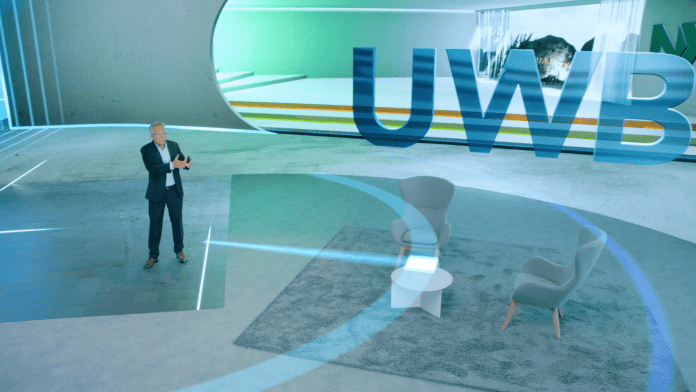Dutch chip-maker NXP Semiconductors has expanded its ultra-wideband (UWB) portfolio to include new integrated circuits (ICs) for IoT use cases including smart locks and real-time location system (RTLS) tags.
UWB technology, a one-time competitor of Wi-Fi and some-time facility for military surveillance, has seen a resurgence, suddenly, following its inclusion in smartphones from Apple and Samsung at the end of 2019. UWB uses wide spectrum (500 MHz to several GHz) and high frequency (between 6.5 GHz and 9 GHz), at a remove from the busy ISM band at 2.4 GHz.
It has evolved since its early incarnation as a rival to Wi-Fi into something quite different, going from an orthogonal frequency-division multiplexing (OFDM) protocol for high data-rate communications to an impulse-based ‘see-through-walls’ radar-imaging tech. UWB enables granular low-power short range positioning (‘fine ranging’) of objects in three-dimensional space – to about 10 centimetres, from a distance of about 200 metres.
As well as locating objects with high precision, it can track them using distance measurements between radios, and calculate time arrival and angle of movement. For its part, Apple has said UWB possesses ‘spatial awareness’.
NXP’s new integrated circuits (ICs) go under the Trimension brand, and take its UWB portfolio beyond mobile and automotive to embrace the busying IoT sector that has developed, quick-smart, around the technology since Apple, notably, integrated it into its U1 chip. The new Trimension SR040 and SR150 deliver “relative position” with a very high level of accuracy, the firm said.
In IoT, UWB is geared to enabling doors to lock and unlock in response to the owner’s actual presence – “where cars are shared with a simple touch of a screen or accessed handsfree, where smart home automation systems follow their owners intuitively and efficiently from one room to another, and people spend less time searching because misplaced items can be tracked in an instant”, it said.
Subscribe now to get the daily newsletter from RCR Wireless News
Trimension SR150 adds angle-of-arrival (AoA) technology for an added level of precision; it is targeted at “UWB enablement” of larger infrastructures, such as access control installations, indoor localization setups, and payment schemes, as well as consumer electronics. Several SR150 IC devices can be placed in a room as UWB anchors to help localize people and objects as they move.
Optimized for lower-power operation, Trimension SR040 is designed for use in battery-operated IoT devices, including UWB trackers and tags, and can be integrated with Bluetooth Low Energy (BLE) or other connectivity controllers in one device. Trimension OL23D0 complements the range of dedicated IoT solutions as an open, fully customer programmable UWB controller for IoT applications.
Rafael Sotomayor, executive vice president for connectivity and security at NXP, commented: “True innovation happens at the intersection of ecosystems. To accelerate the adoption of UWB and create meaningful new experiences, smart edge devices need to gain spatial awareness, whether it’s a smartphone, car, or different IoT device form factor.”
He added: “Imagine the possibilities of moving through daily life with fewer barriers as devices anticipate our actions. Our new IoT ICs, combined with NXP’s connectivity portfolio, will help developers add dimensionality to devices and objects to make this vision possible.”
Ramesh Songukrishnasamy, senior vice president and chief technology officer at HID Global, commented: “UWB will enable many new location-based services and device-to-device IoT applications both in consumer products and industrial applications.
“With higher levels of accuracy in positioning capabilities along with increased data security compared to other RF technologies, UWB will significantly improve the handsfree access control user experience in places such as offices, hospitals, educational institutions, and homes.”

